Some sites appear so surreal that you would be forgiven for thinking they are computer-generated. Bastei in Germany is one such location. This breathtaking rock formation was created over a million years ago by water erosion. Some of the rocks rise to heights reaching over 1000 feet (305 meters) to form an imposing throne above the surging Elbe River.
The daredevil Bastei Bridge spans these rock needles to give a majestic view of the formations and the mighty River Elbe in the background. The Bastei Bridge is a unique integration between man’s architectural efforts and naturally occurring rock formations. On this site once stood a historical castle. Unfortunately, nowadays not much of Neurathen Castle remains but the historical atmosphere does.
The Bastei rocks and the Bridge give you a wonderful panoramic view of the surrounding mountains and much more. The 76.5-meter man-made bridge connects and towers above the amazing rock formations. You can see the River Elbe, the remains of Falsenburg Neurathen (Neurathen Castle), and Lilienstein Mountain among others.
Table of Contents
- The History of the Bastei Bridge
- What Makes Bastei Bridge so Spectacular?
- How to Get to Bastei and Saxon Switzerland
- Your Available Travel Options
- By Train from Dresden to Rathen
- By Private Car
- By Public Bus
- Best Time to Visit Bastei
- What to Expect at Bastei & Bastei Bridge
- Hiking and Climbing Expeditions
- Visit the Neurathen Castle Ruins and Museum
- Bastei Entry Fees and Opening Hours
The History of the Bastei Bridge
Formed in 1990, the Saxon Switzerland National Park is perhaps more famous because it hosts the Bastei Bridge than for anything else. The unique tourist attraction that we know as Bastei Bridge dates back to the 19th century. In those days, tourists only came to admire the towering and awe-inspiring view of the rocks.
It was in 1814 that a 487-steps staircase was created, climbing out of the valley up to the needle rocks above. This is the staircase that granted access to the rock formations. It was only in 1826 that the first wooden bridge was constructed. The original wooden Bastei Bridge was replaced in 1851 with the stone structure that we see today. Since then, the number of visitors flocking to the Bastei Bridge has been rising.
The name ‘Bastei’ is derived from the word bastion and it’s therefore not a surprise that at Bastei you will find the ruins of Neurathen Castle. This castle dates back to 1755 when it was first mentioned in historical records.
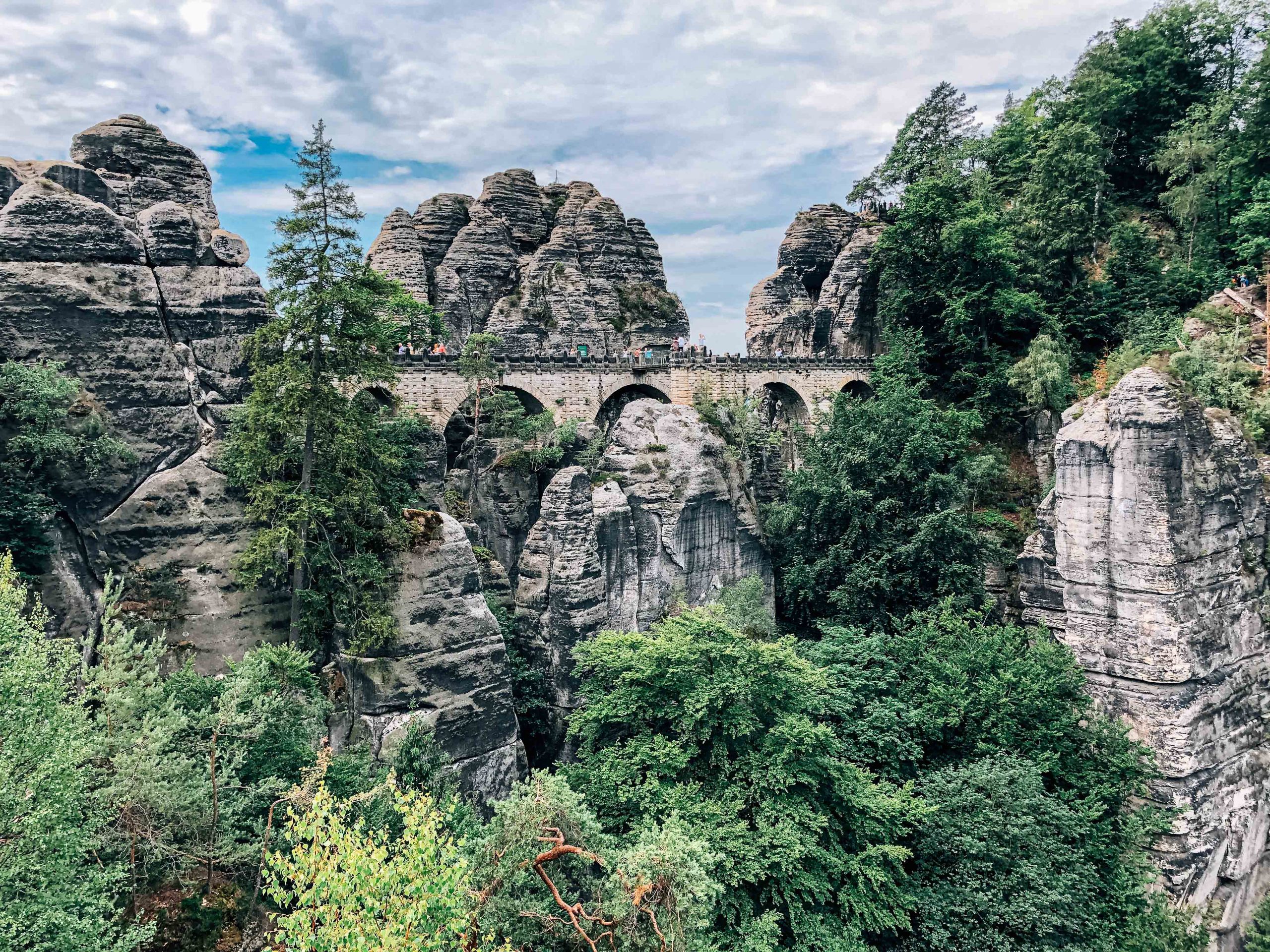
What Makes Bastei Bridge so Spectacular?
The 76.5m long man-made Bastei Bridge that doesn’t in particular lead to any specific place. It simply spans over a number of towering rugged rocks that make up the Bastei formation. Some of the rocks reach heights of 305 meters (1000 feet) and the bridge itself reaches 194 meters (636.4 feet) above the mighty River Elbe. This city of stone is the crown jewel and pinnacle landmark of the Saxon Switzerland National Park.
You simply cannot afford to miss visiting this unique attraction! The Bastei Bridge accords you some of the best lookout points that overlook the Saxon Switzerland region. And guess what? You can be there in under one hour from Dresden, the capital of Saxony, Germany.
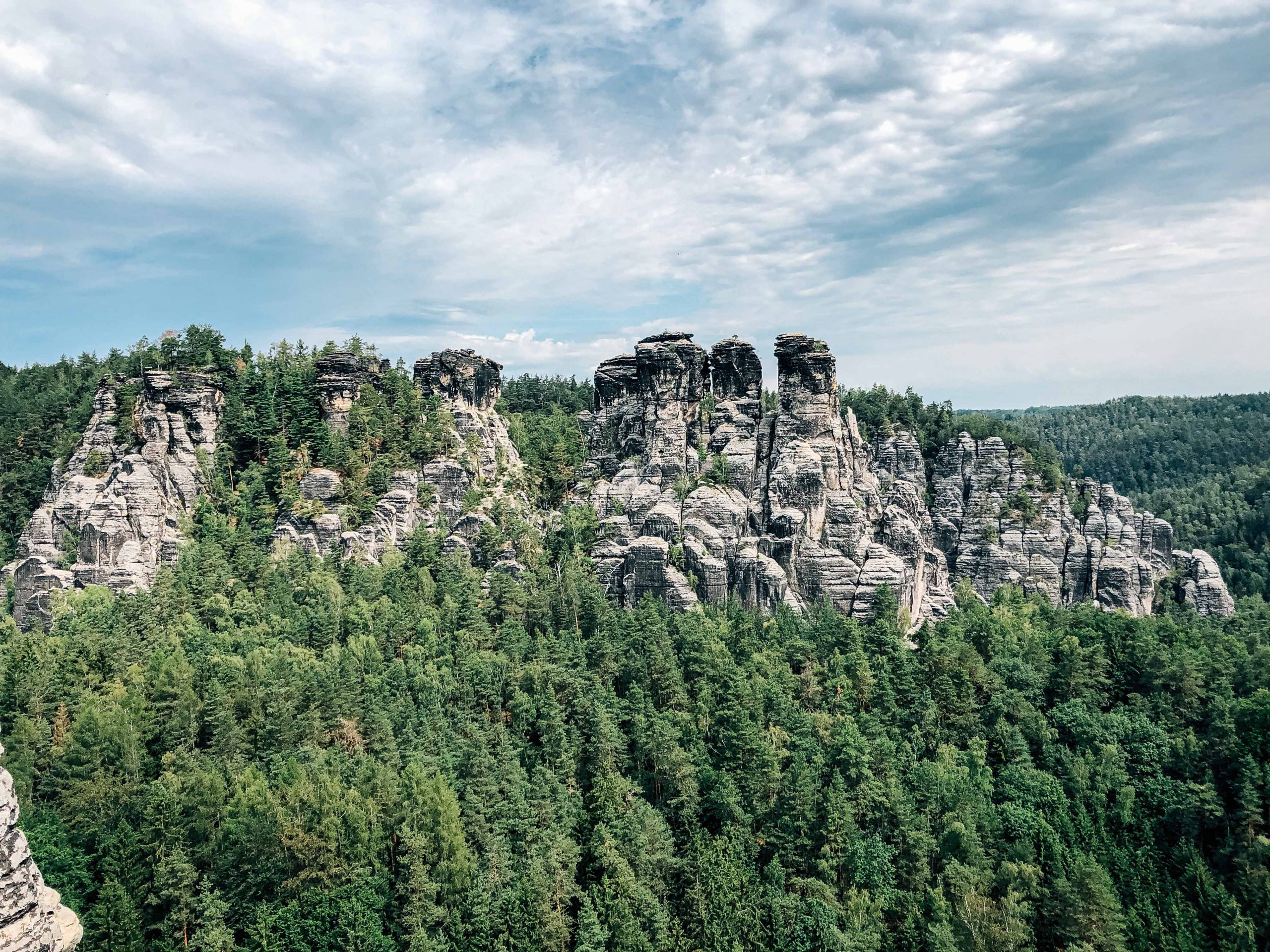
How to Get to Bastei and Saxon Switzerland
For starters, you are not travelling to Switzerland! We know that the name Saxon Switzerland National Park can be rather confusing. Neither Bastei nor the Park is in Switzerland or even Sweden. On the contrary, we are talking about eastern Germany. A quick look at the map will show you that the Bastei rock formation and the Bastei Bridge lie about 40 kilometres east of the German city of Dresden in Saxony.
The Bastei Bridge and the Neurathen Castle form part of the Saxon Switzerland National Park. The castle was built in the 11th century and during its prime, it was a formidable and impenetrable fortress. Today, however, not much of it remains except a couple of rooms carved out of rock and some sections that appear to have been horse stables.
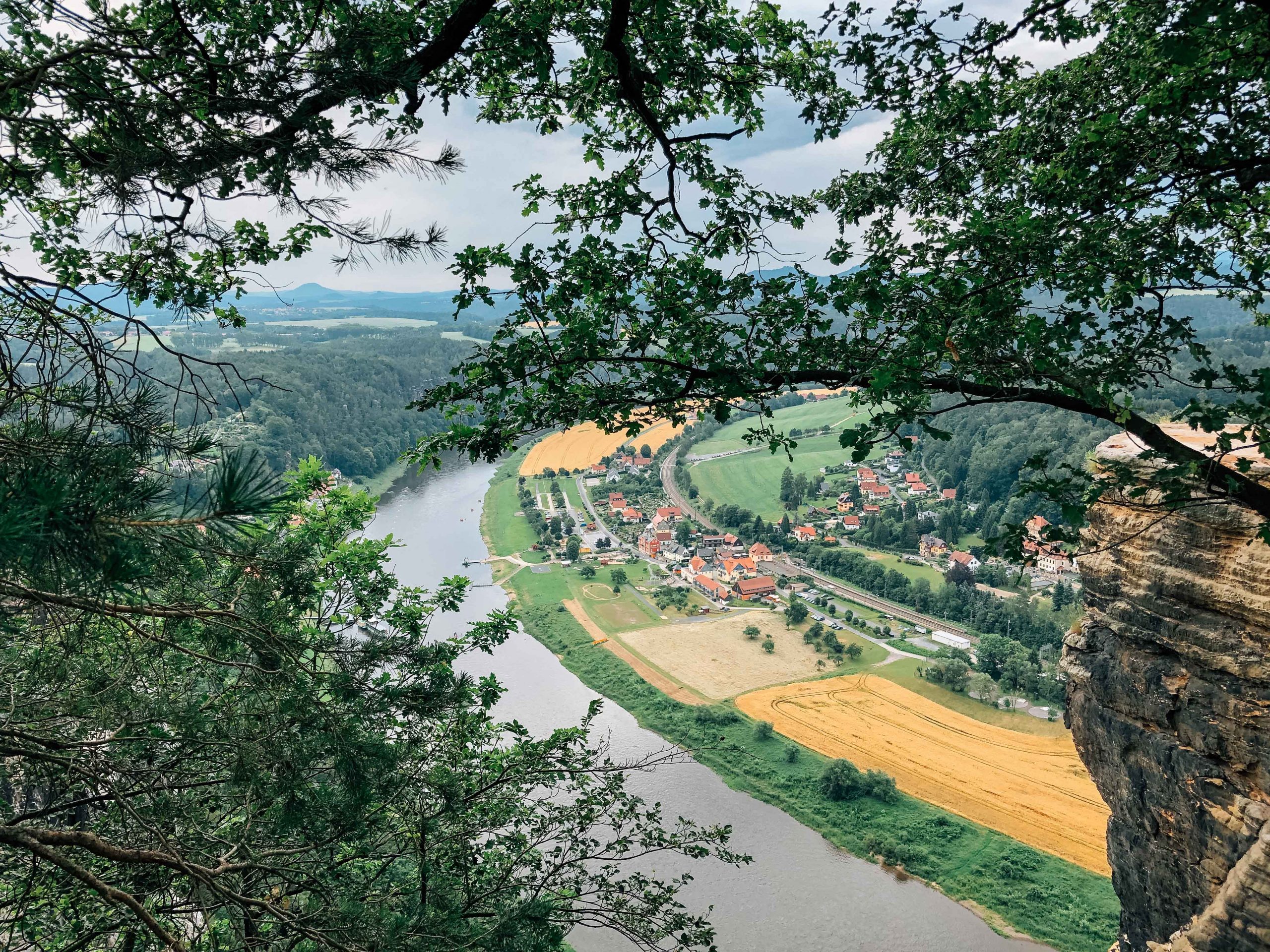
Your Available Travel Options
We have talked about the Bastei rocks, the Bridge, and the Castle and now you must be wondering how you can get to this fascinating location. The good news is that Bastei is only 50 kilometres from Dresden and quite easy to reach using public transport. You have a train, private car, or bus as your options. If you plan on exploring the rest of Park, hiring a car makes the most sense.
Even though you can take advantage of regular day trips from Berlin that are on offer, the best way of exploring the region and its surrounding area is first to get to Dresden and then travel to Bastei from there. The town of Rathen forms the main base for those wishing to visit the Bastei and Bastei Bridge. From Dresden, you can also reach Rathen by paddle steamer that plies the River Elbe.
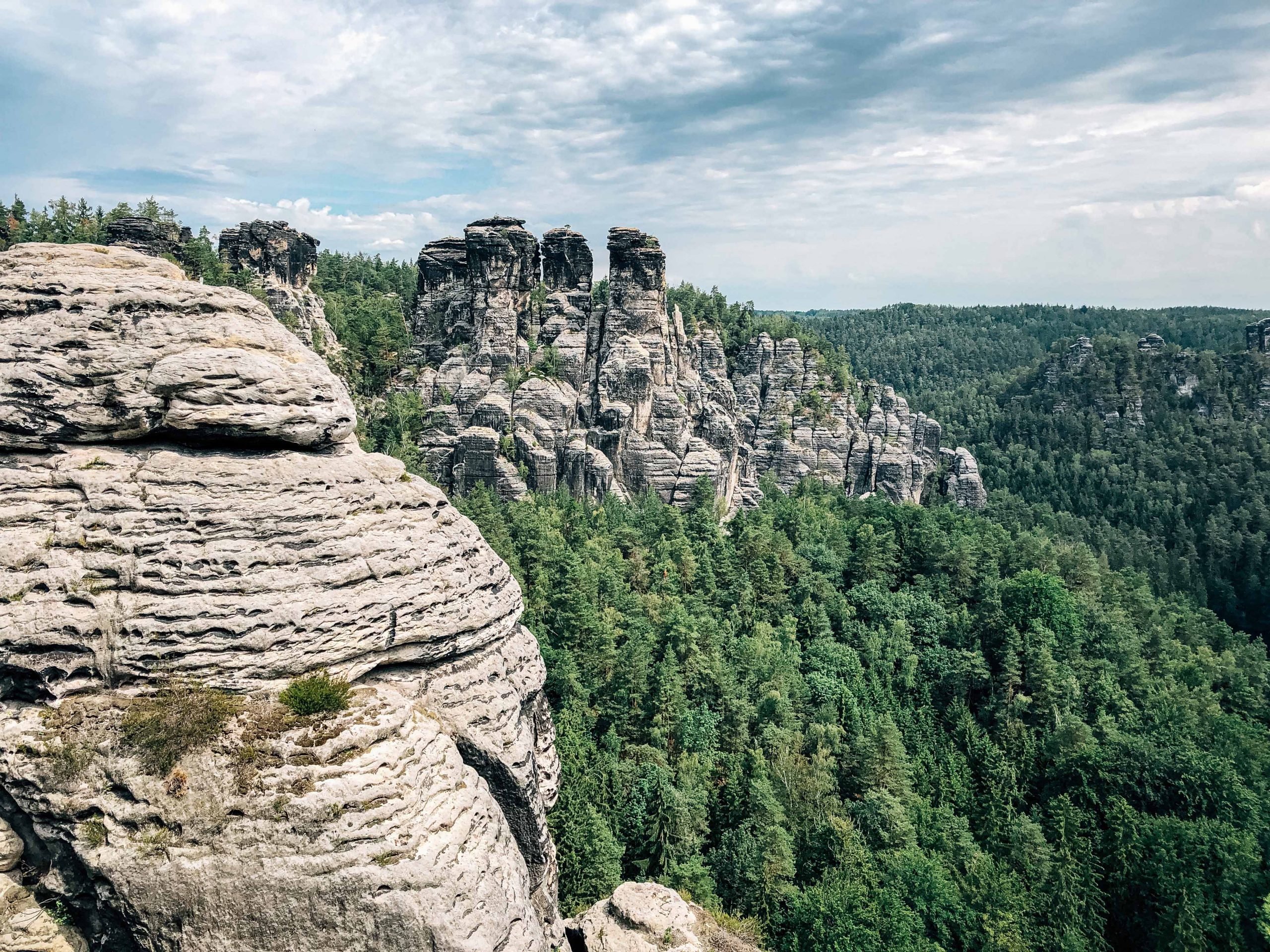
By Train from Dresden to Rathen
By far the easiest and most versatile way of getting to Bastei from Dresden is via the train that stops in the small spa town of Rathen. Train S2 departs every 20 minutes but remember to exit at Rathen. The short trip takes about 35 minutes. Then cross the River Elbe using the ferry and simply follow the trail to Bastei.
Once you cross the Elbe, following the signs is easy as these have been well-marked to make it easy for you. Alternatively, simply follow the other hikers who are obviously heading where you are going; Bastei Bridge. The hike takes about 30-45 minutes depending on your speed and fitness level. From the bottom, you will clearly see the famous Bastei rock formations.
The hike is not only quite pleasant but short. The pathways have railings and are also well maintained. However, remember to have sturdy walking shoes. Talk of keeping healthy to see beauty!
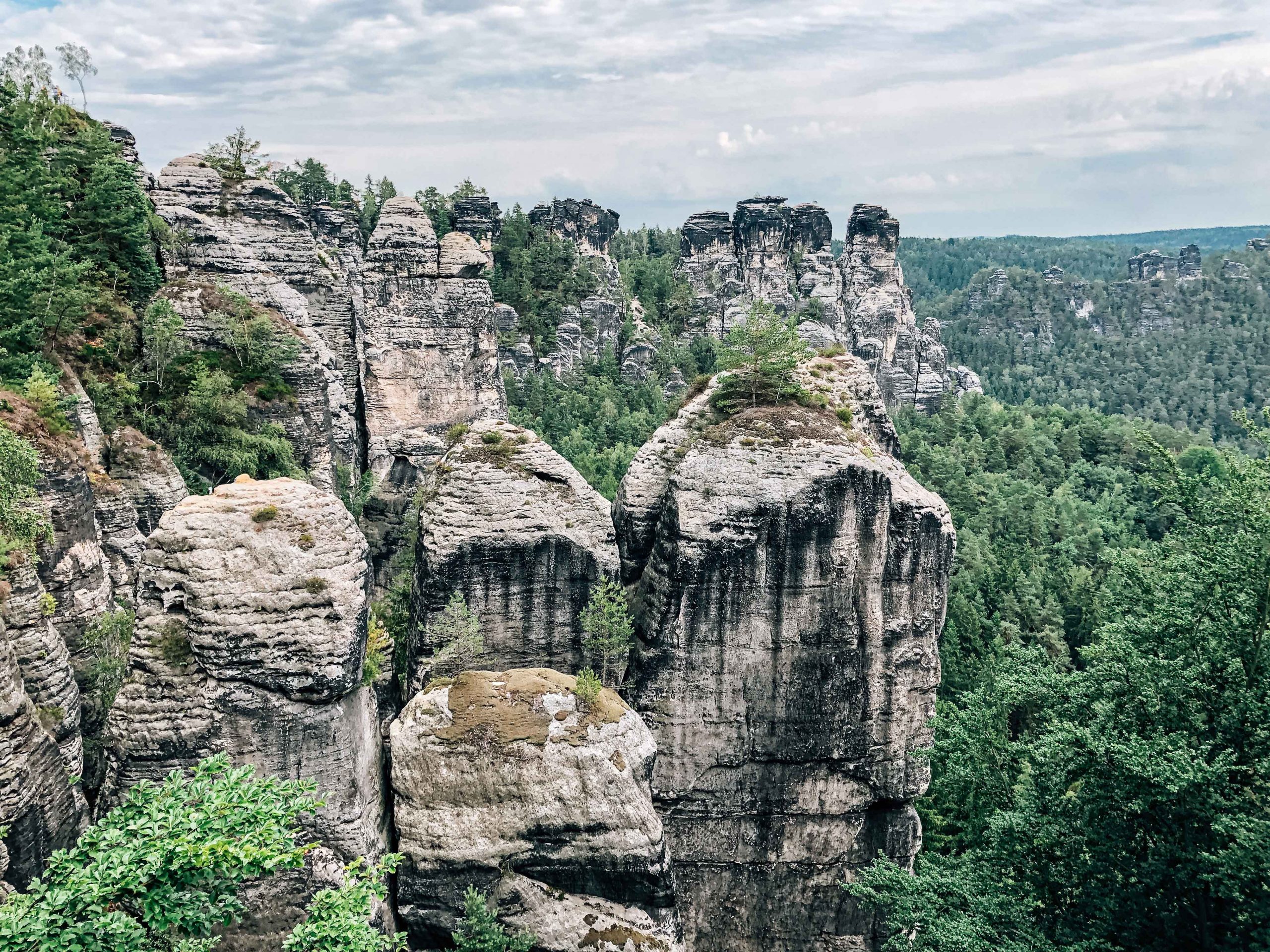
By Private Car
The most convenient and fastest way of getting to Bastei is by car. You will have to drive towards the Bastei Berghotel as this is where the Bastei entrance is located. However, because only resident hotel guests can park there, you have to leave your car in the National Park’s public parking lot, 3 km before you get to the hotel itself. From there, take a bus that takes you right to the Bastei entrance for a return ticket of 2 Euros.
You can also use a car to reach Bastei by taking the Basteistraße S165 to the south. This road terminates just before reaching Bastei. You may want to turn on your GPS navigation and follow directions until you reach the nearby car parking.
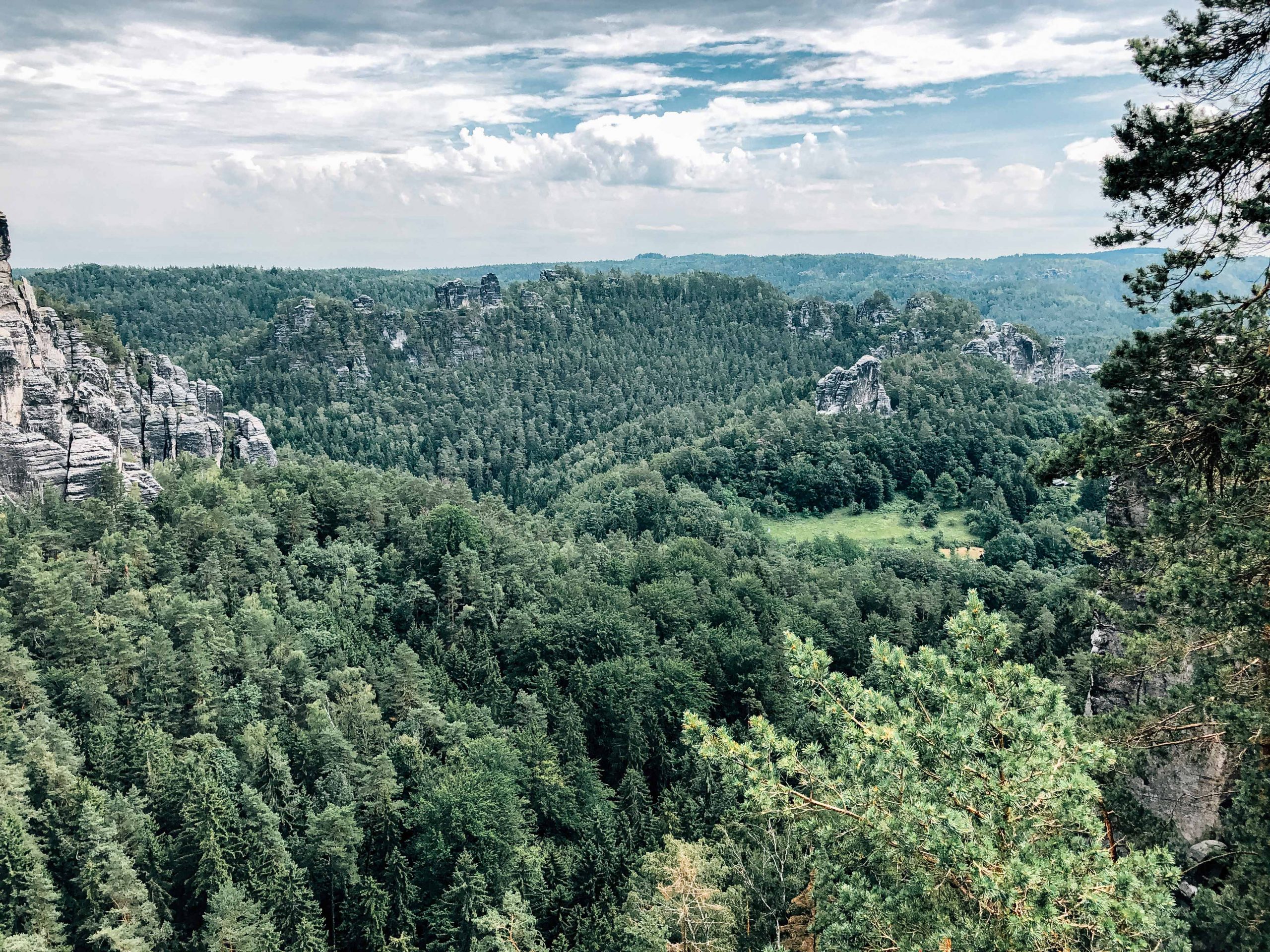
By Public Bus
If you are travelling from Berlin, Dresden is only 2 hours and 30 minutes away. So it’s possible to do a weekend trip or even better, a day trip from Leipzig to Dresden. It’s also possible to use the cross-border Tisá – Sněžník – Rosenthal – Königstein bus line number 217. This service, however, is only available during public holidays and weekends.
Another option is to use the bus from Děčín, line number 434. Děčín has great train and bus connections if you are travelling from the direction of Prague.
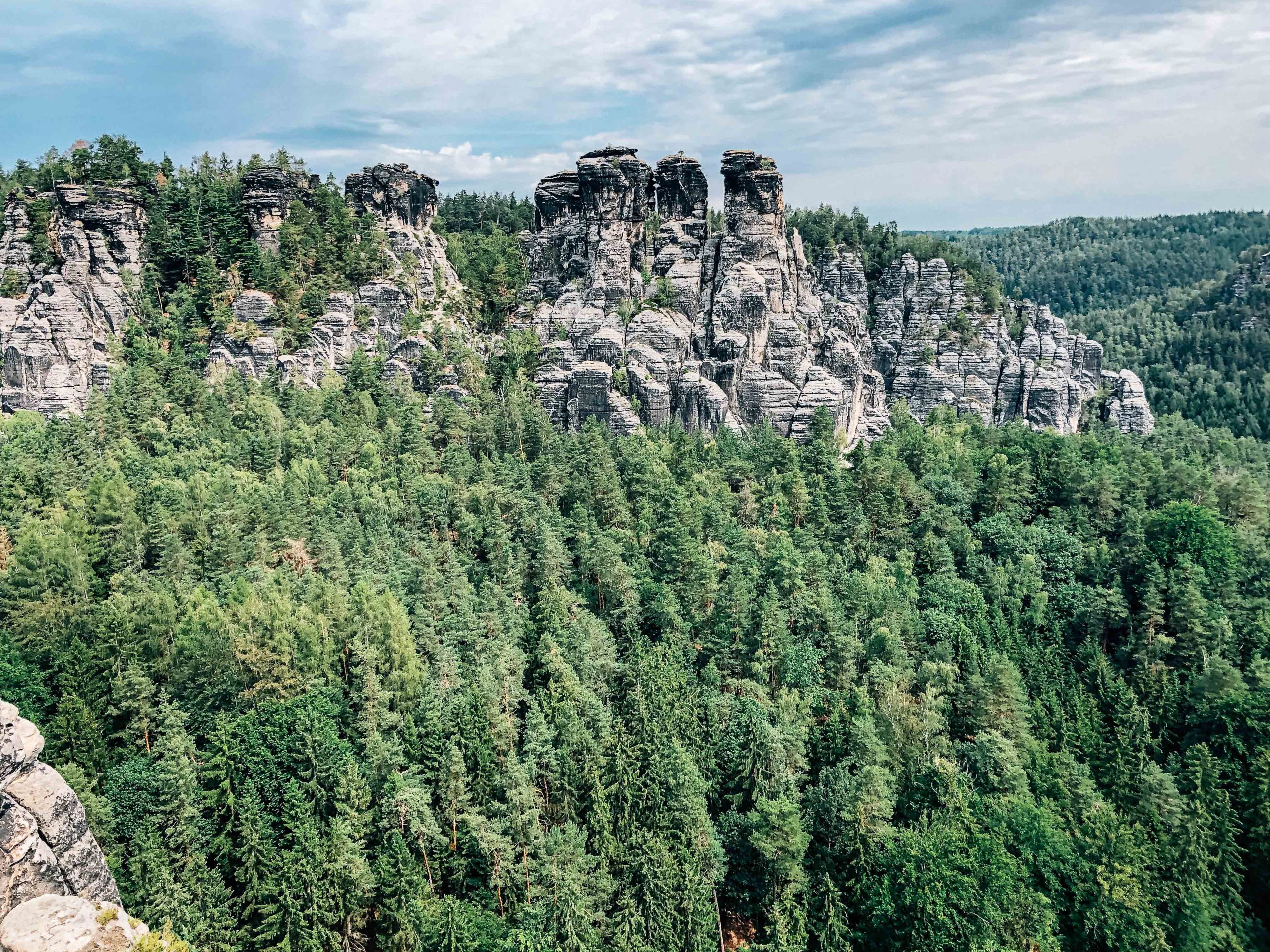
Best Time to Visit Bastei
The Bastei is undoubtedly Saxon Switzerland National Park’s most popular spot. You can, therefore, be sure of encountering crowds unless you can make it there before 10 am or perhaps after 4 pm.
This area, around Bastei with its rolling, green hills and numerous hiking trails, is a major attraction that draws many outdoor enthusiasts. You can, therefore, expect weekends and nearly all day in summer to be busy.
We have visited Bastei and the Bridge many times in spring, summer, autumn, and even wintertime and we can without fear of contradiction confidently tell you that the best time to visit Bastei is right now. Why? Because though the seasons may change, the breathtaking views don’t.
The Bastei Bridge is really so unique. It would be such a big shame if you were to rush the rare experience. We recommend that you time your visit well so that you enjoy it to the maximum. The busiest time is around midday as that is when lots of tourist buses are around and you may want to avoid that rush hour.
Travel tip: Why not stay at the Berghotel Bastei, the mountainside hotel a short walking distance from the site for a day or two? Then you can conveniently visit the Bastei and Bastei Bridge whenever you want. After all, the Park is never closed!
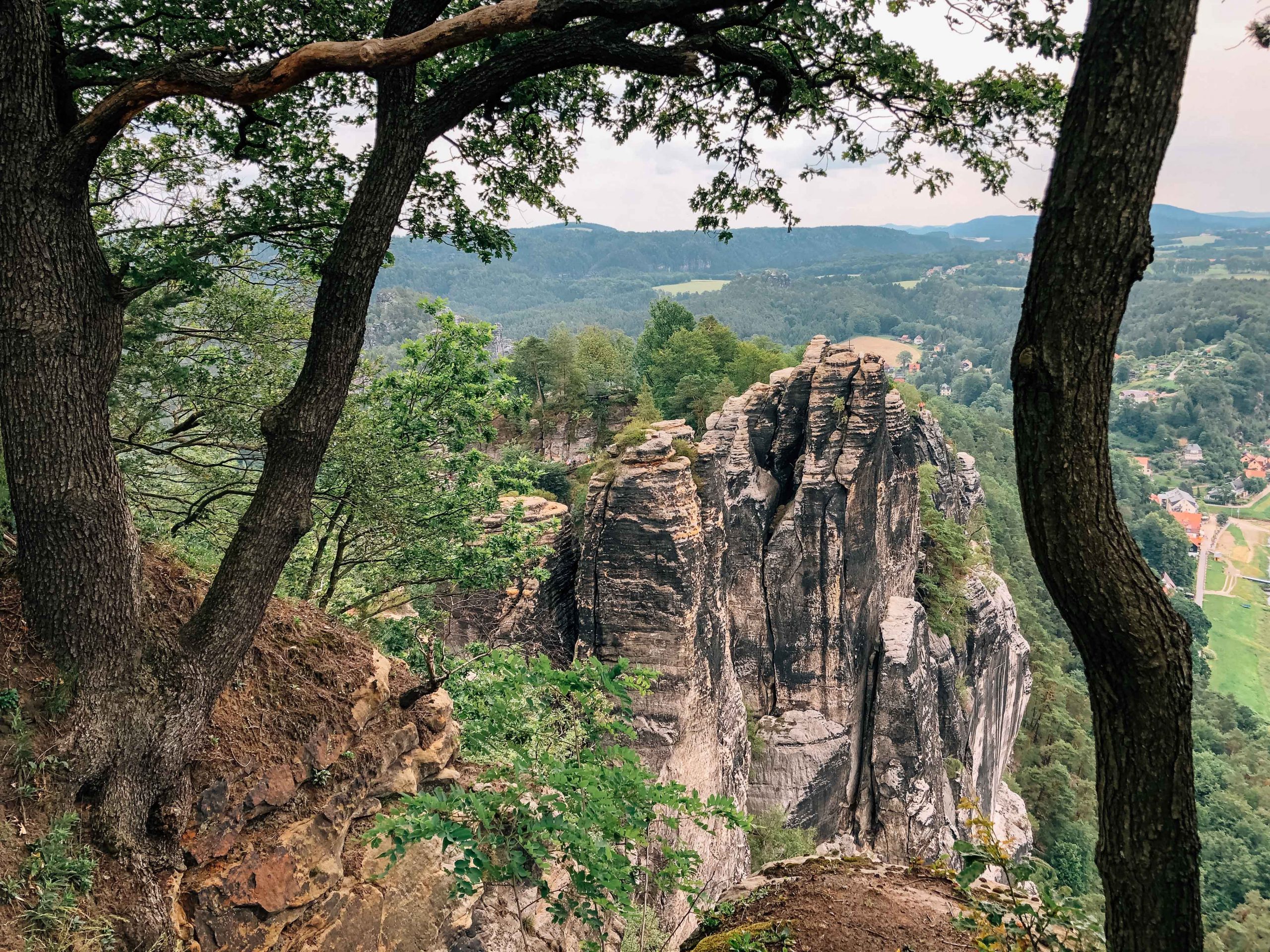
What to Expect at Bastei & Bastei Bridge
Some of the most spectacular scenes in Germany are found in Saxon Switzerland. These include pristine forests, historic fortresses, and sandstone pillars. But the cream of the area is Bastei Bridge. This place has something so special and unique. You would be forgiven for thinking Bastei Bridge is a fairy-tale, something from another world altogether for it’s truly magical.
Let us assure you something. It doesn’t matter whether you are visiting Bastei in winter or summer, these ancient sandstones are going to impress you as nothing else will. We think the best part is that you don’t even have to pay an entry fee to enjoy what the Saxon Switzerland National Park has to offer!
As you approach the area, the landscape doesn’t seem to be any different from the rest of the unremarkable green forest common in Germany. Then as you approach Bastei, you begin to see these giant rocks dotted all over the place. They appear completely out of place amidst the green forest as if someone placed them there on purpose.
And then you catch a glimpse of the bridge. This is Bastei Bridge, 76 meters long, 40 meters high, with 7 arches. This is a unique bridge that serves absolutely no purpose other than letting you admire the Bastei rocks and the panorama of the Park from the different viewpoints. It is estimated that over a million people visit the bridge each year.
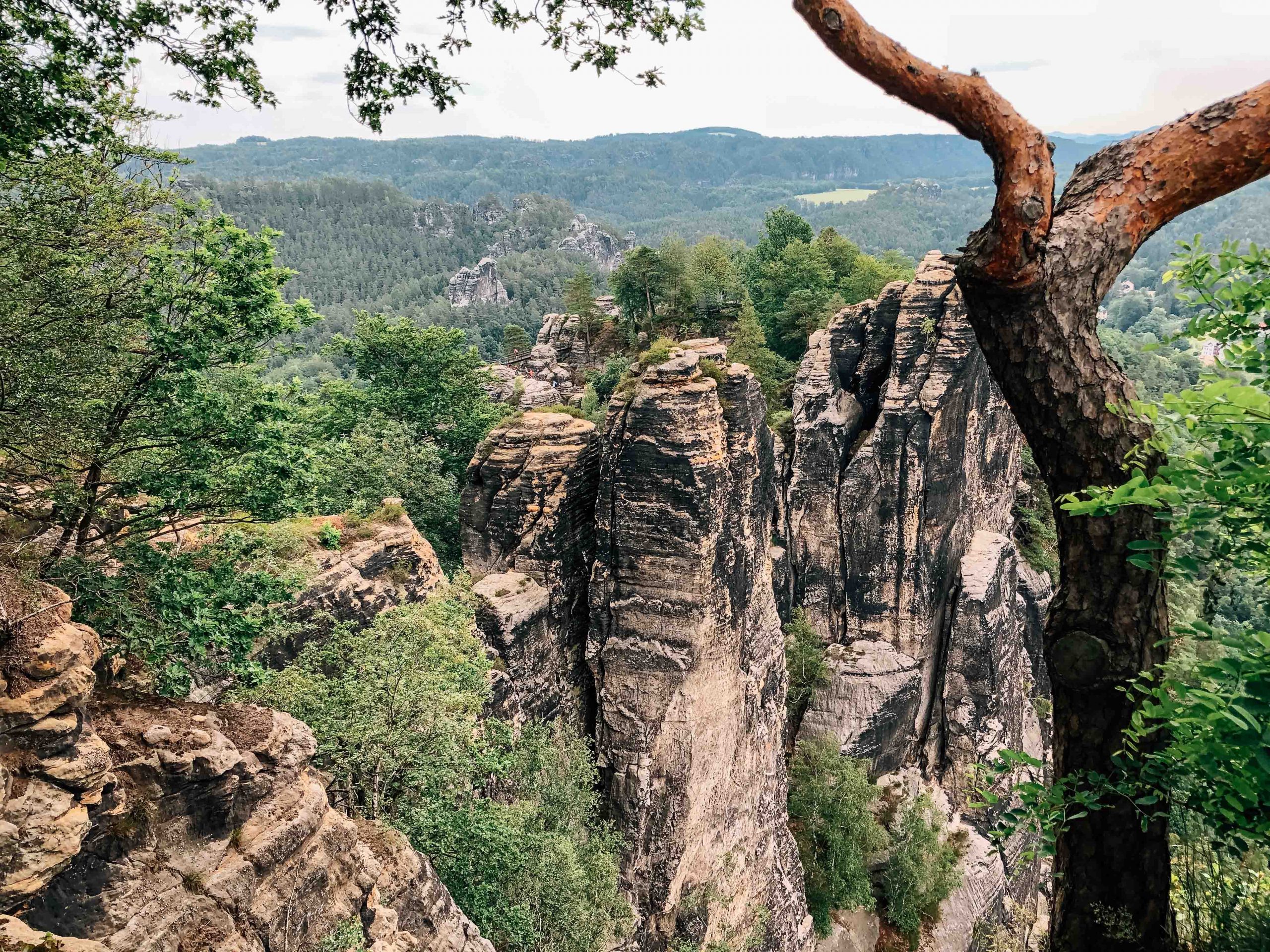
Hiking and Climbing Expeditions
Bastei, with its green rolling hills and many hiking trails, is a must if you are an outdoor enthusiast seeking something different. From Bastei, there are numerous hiking trails looping around while others go through the surrounding forests. Some of the best trails will take you downwards to the valley floor, through the little town of Rathen, the perfect place to stop for ice cream or lunch.
All of the Bastei hiking and climbing trails are well marked. The popular Eisenach–Budapest mountain path also runs over the Bastei region. The region is also popular with both pro and amateur rock climbers.
Is hiking and climbing hard? This will largely depend on your fitness level. But allow us to warn you that hiking down to the valley floor and climbing up again can be quite tiring as it’s very steep. Most people, however, will find it fun and relatively easy. You should be quite fine if you don’t rush it. Remember to use the right hiking or climbing gear, and if necessary, hiking poles.
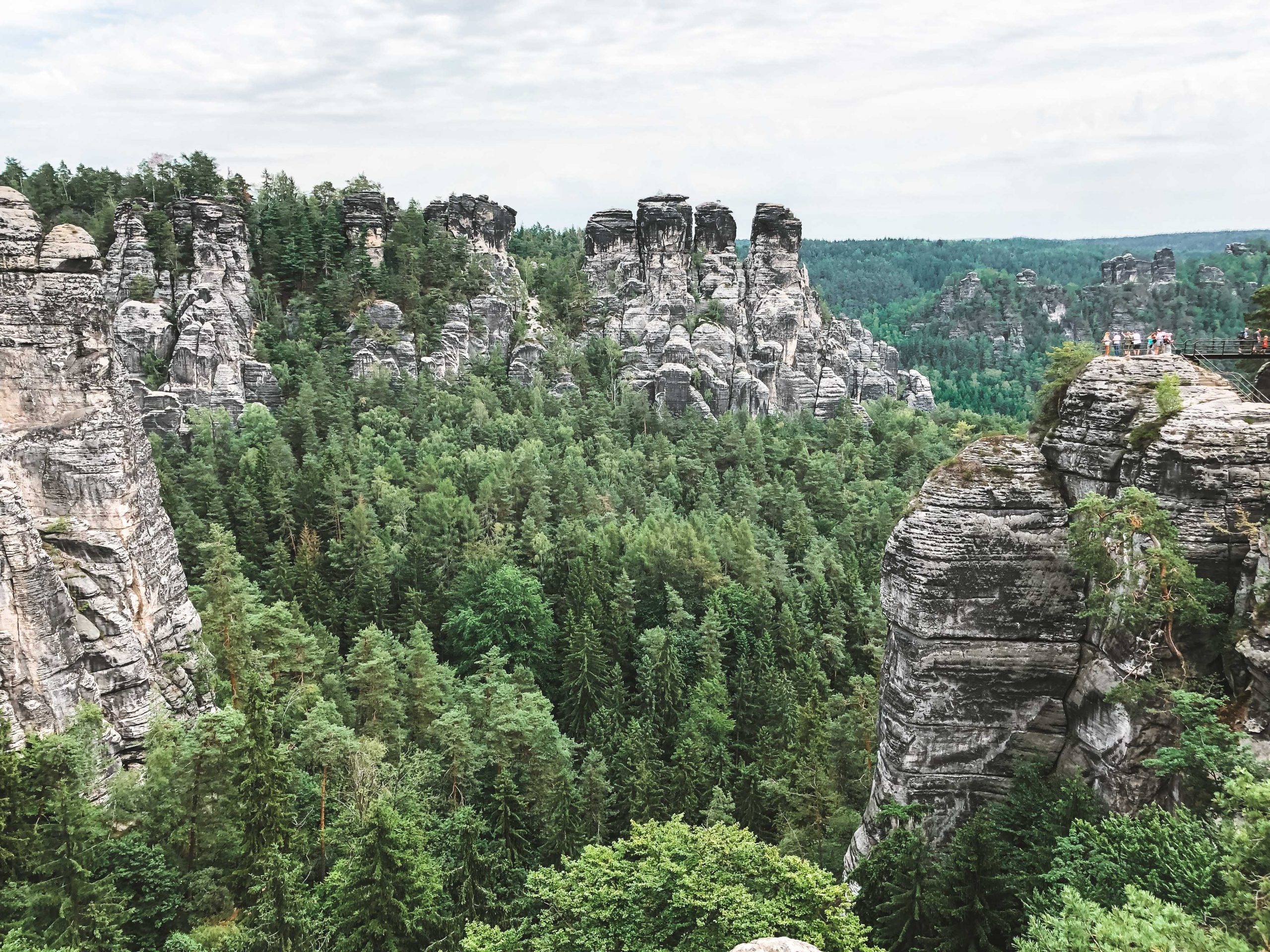
Visit the Neurathen Castle Ruins and Museum
The much-visited and photographed Baste Bridge leads through the rocks to the ruins of a medieval castle, the Neurathen Castle. This is open to the public and you only need to pay a small entry fee.
Neurathen Castle (Felsenburg Neurathen) first mentioned in 1755 AD abutted the mighty rocks. It was the largest rock castle in the Saxon Switzerland region and can be reached via the iconic Bastei Bridge. Today you will only see the remnants of the 11th-century castle.
A walk around the Bastei reveals rock-hewn rooms, timber rebates, a cistern, and the natural stone towers. The ruins and the partly reconstructed castle now form part of the open museum at Bastei. Although in ruins, it adds to the intrigue of Bastei.
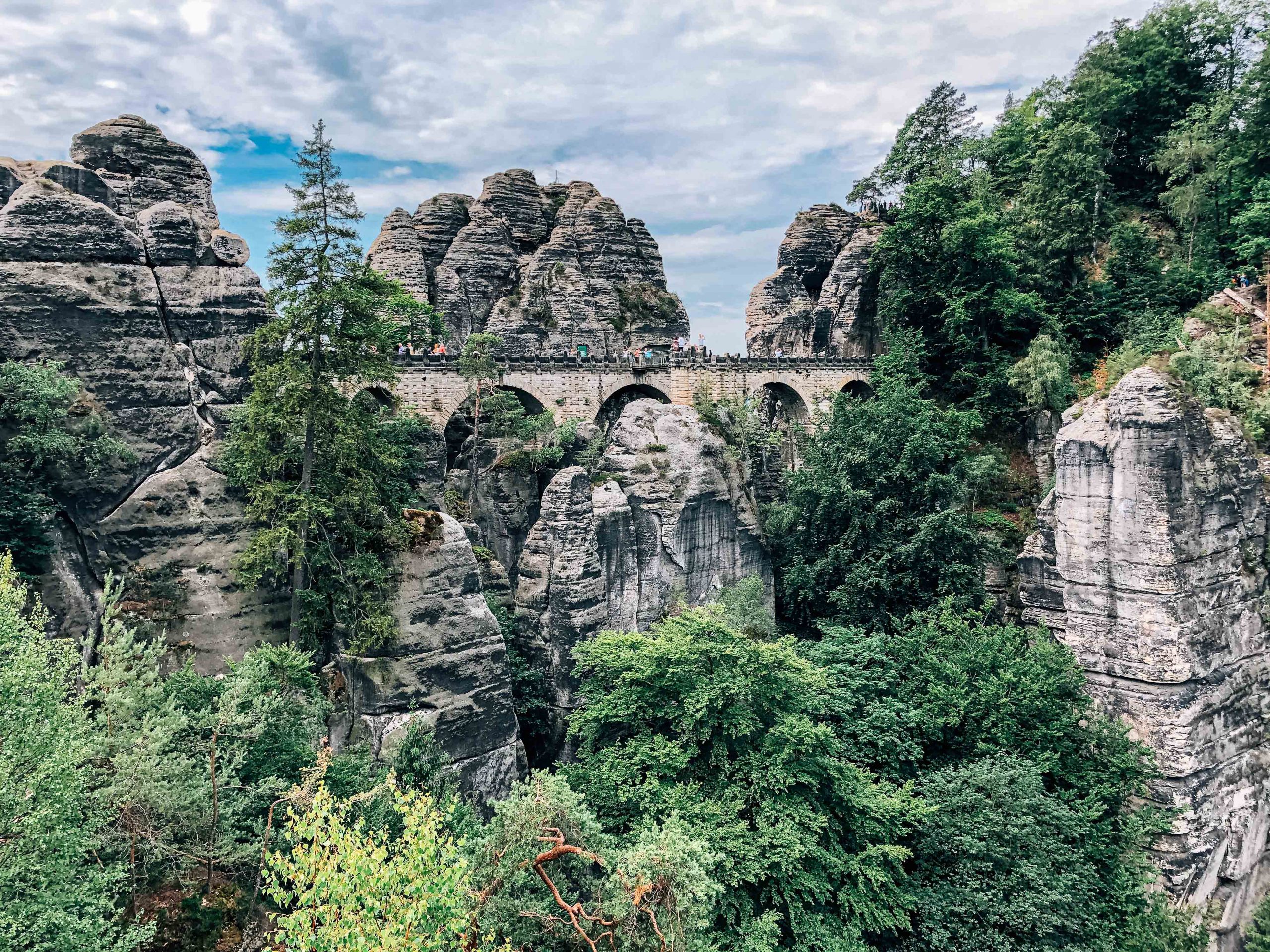
Bastei Entry Fees and Opening Hours
Saxon Switzerland National Park doesn’t charge an entry fee. You are free to spend as many hours as you wish walking, sitting, or exploring the Park. The Park has no opening and closing hours, meaning you are free to come and go when you want. You can watch the sunrise or sunset look up to the beautiful moon, the stars or take the best selfies.
The highlight of the Park is Bastei & Bastei Bridge – all free of charge!! You will only have to pay for parking your car and a guide in case you opt to use one. This area has no opening or closing times and the area is not even fenced. You are free to visit the famous rock formations at any time throughout the year. The only place you will have to part with a small fee is when entering the Felsenburg Neurathen.

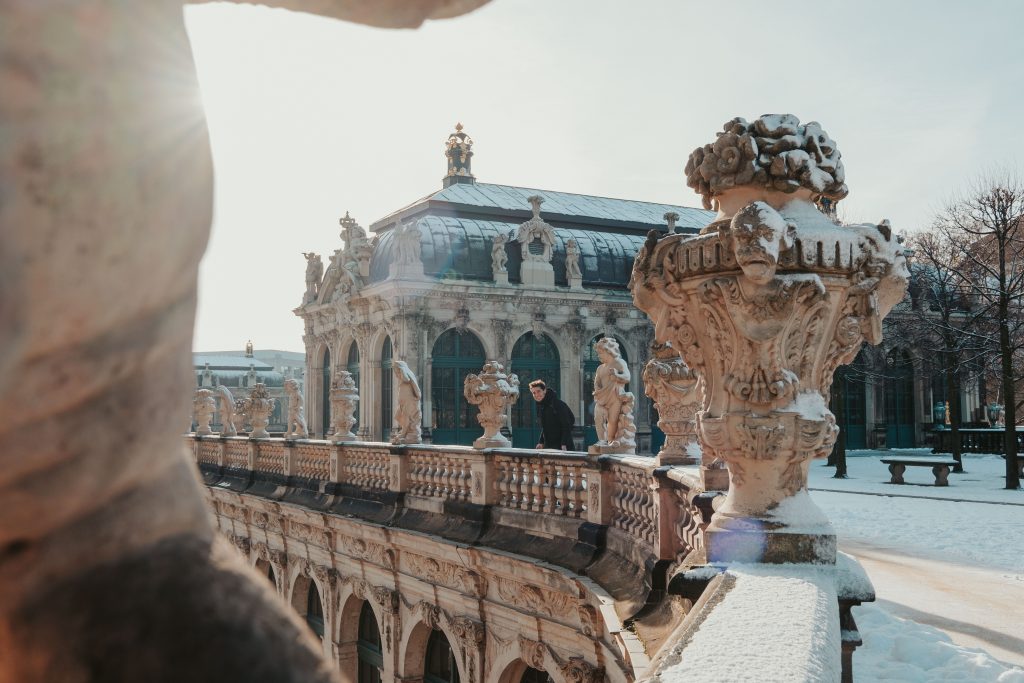
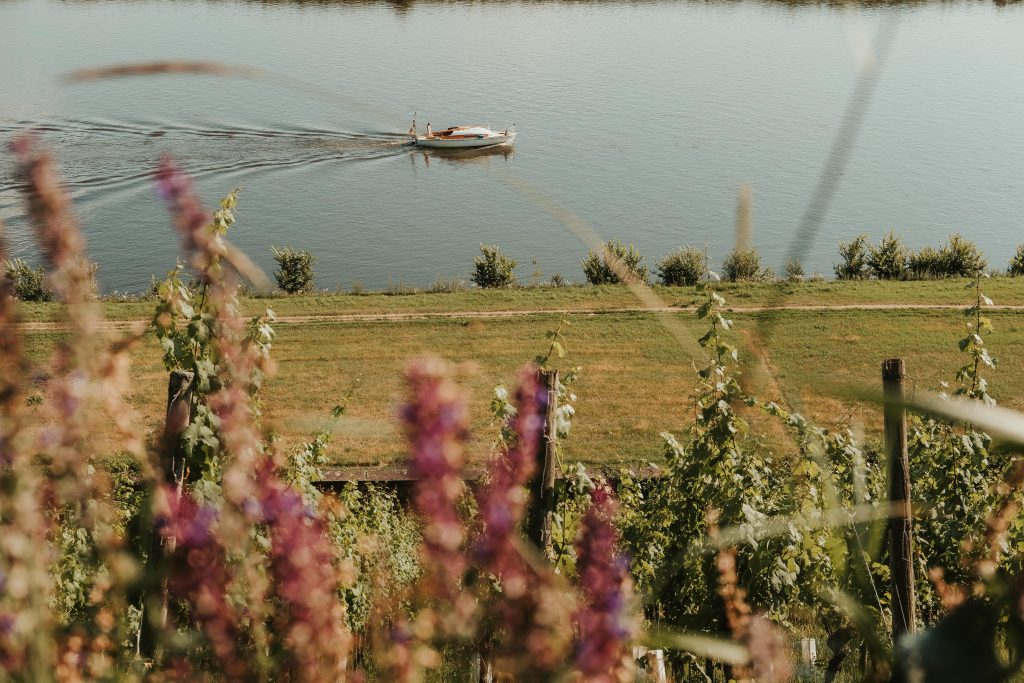

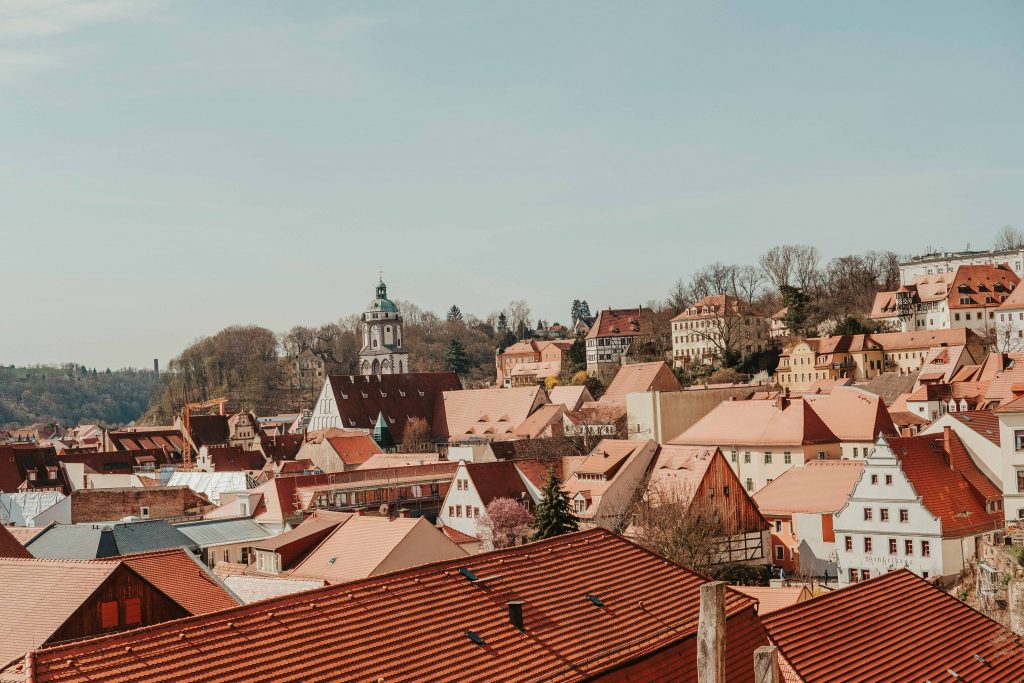

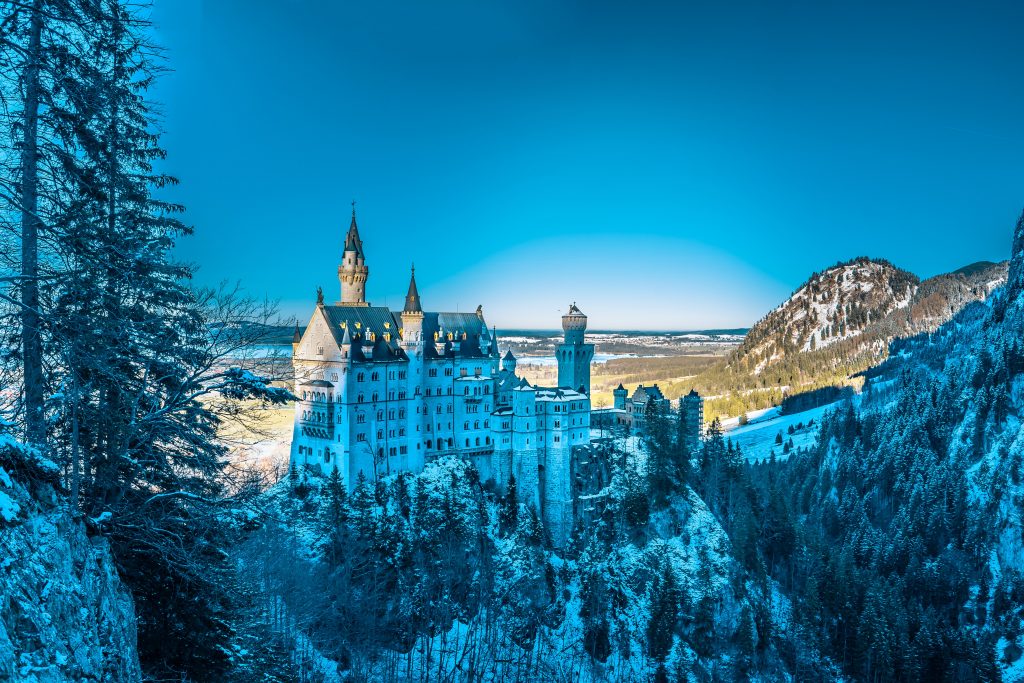


Leave a Reply